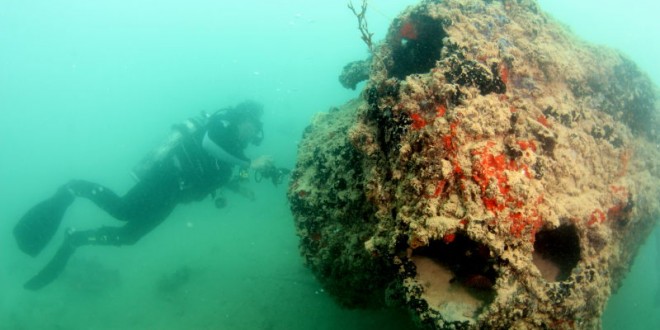A team of researchers has released images and video of a US Navy plane which sank during the opening minutes of the Japanese attack on Pearl Harbor in 1941.
“These were high priority targets for the Japanese,’ said National Oceanic & Atmospheric Administration archaeologist Hans Van Tilburg.
Its massive body is carpeted with algae. A haunting reminder of what could have been. This is one of the U.S. Navy’s Catalina PBY Flying Boats sitting 30 feet down since Dec. 7th, 1941 in the murky depths of Kaneohe Bay.
Today, hard to recognize and, until now, hard to find.
“I think the focus has been on Pearl Harbor but really the attack was on all of the military installations,” said Van Tilburg.
In 1994, a dive team with the University of Hawaii set out to find the Catalina fleet. Twenty-seven of these long-range patrol bombers never got the chance to show their strength. Japanese bombers sunk the fleet minutes before the attack on Pearl Harbor.
There was another dive in 2008. Then, a third try in June. Van Tilburg led the way. Students from the University of Hawaii’s Marine Option Program put in the work.
“Not only did they learn to do this type of survey underwater, but they get to appreciate this type of history for Hawaii,” said Van Tilburg.
This summer — better intel, smarter technology, and clearer conditions are uncovering the details. You can see the gunner’s turret mounted outside the plane. The fuselage sports a gaping hole.
And then, the cockpit. Most curiously, the position of the throttle.
“They look like they’re in the position to start up the port engine, so that suggests maybe someone was in that plane trying to get it off the water,” said Van Tilburg.
Only one of six believed sunk by Japanese bombers. As to the other five, still a mystery. And a mission for those lifting the veil to enhance our history.
“It tells us about our past and I think it’s something that everybody should get to share,” said Van Tilburg.
The UH Marine Option Program and Marine Corp Base Hawaii funded the research. Van Tilburg notes these wreckages and many others are in waters protected by federal law. So, they hope people respect its resting place and help preserve the past.
Agencies/Canadajournal
 Canada Journal – News of the World Articles and videos to bring you the biggest Canadian news stories from across the country every day
Canada Journal – News of the World Articles and videos to bring you the biggest Canadian news stories from across the country every day



